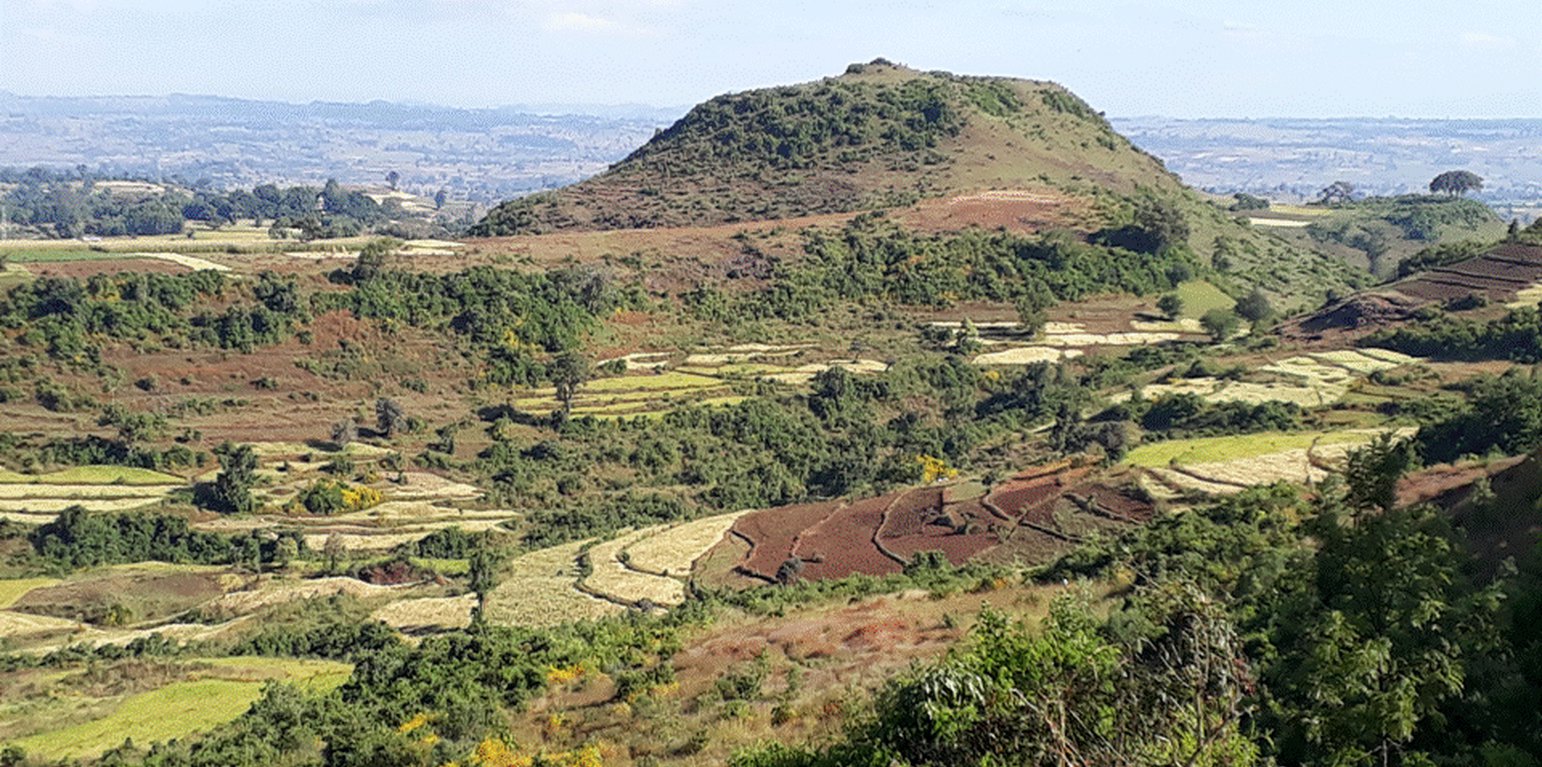



Integrated Farm Land Conservation (IFLC) is practiced within a watershed on individual farmland. Main characteristics of the technology are conserving soil and moisture and at the same time safe disposal of excess runoff.
Farm terrace construction is actually terrace development, starting with soil or stone bunding that enables the development of a terrace, i.e. bench formation due to soil erosion, sediment deposition and tillage movement through time (5-15 years). The bunds are levelled or graded, the walls having a bottom width of 0.8 - 1.0 m, and a top width of about 0.4 m, the bund height is up to 0.6 m. Bunds are constructed parallel to the slope or slightly graded, on slopes ranging from 8 - 20 % gradients, and at a the vertical interval of 1-2 m between two bunds. The bunds are stabilized with vegetative measures like grass and legume shrubs. The drainage structures consist of the ditch along bunds, cut-off drains above cultivated land and waterways through it, the depth of a cut-off drain being 0.3 - 0.4 m and the average width 1.5 m, the depth of the waterway being 0.3 - 0.5 m, and the width of the waterway being 1.5 - 2 m. For bund and terrace protection in the initial years, livestock is excluded and farmers exercise cut and carry. Livestock exclosure encourages land users to practice crop residue management.
The purpose of the technology, in general, is to conserve soil and water, minimizing slope gradients of the farmland, improve soil moisture, reduce compaction, enhance infiltration and thus improve the recharge of groundwater. Furthermore, livestock exclosure contributes to soil fertility enhancement following crop residue management. The technology initially maintains soil fertility and through time, it has its own contribution to the betterment / increment of crop yield. Nevertheless some farmers complain about the land being occupied by the bunds, although this is later on compensated, as forage can be produced on the riser slopes of the growing terraces.
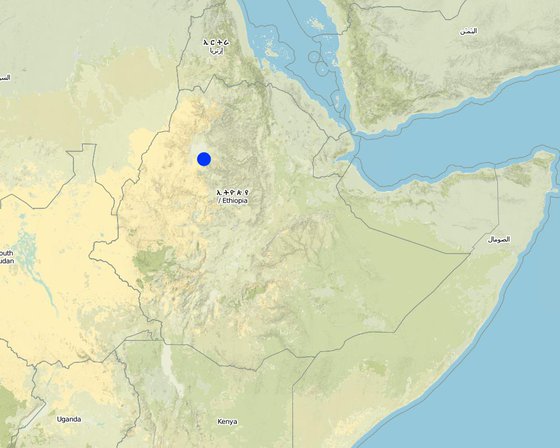
ສະຖານທີ່: Abagerima Watershed in the Highlands of Ethiopia, Amhara Region, Ethiopia, ອີທິໂອເປຍ
ຈໍານວນ ພື້ນທີ່ ທີ່ໃຊ້ ເຕັກໂນໂລຢີ ທີ່ໄດ້ວິເຄາະ: 2-10 ພຶ້ນທີ່
ການແຜ່ກະຈາຍຂອງເຕັກໂນໂລຢີ: ແຜ່ຂະຫຍາຍຢ່າງໄວວາໃນພື້ນທີ່ (3.0 km²)
ຢູ່ໃນເຂດປ່າສະຫງວນທີ່ບໍ?: ບໍ່ແມ່ນ
ວັນທີຂອງການປະຕິບັດ: 2013; ຕໍ່າກວ່າ 10 ປີ ຜ່ານມາ (ມາເຖິງປະຈຸບັນ)
ປະເພດຂອງການນໍາສະເໜີ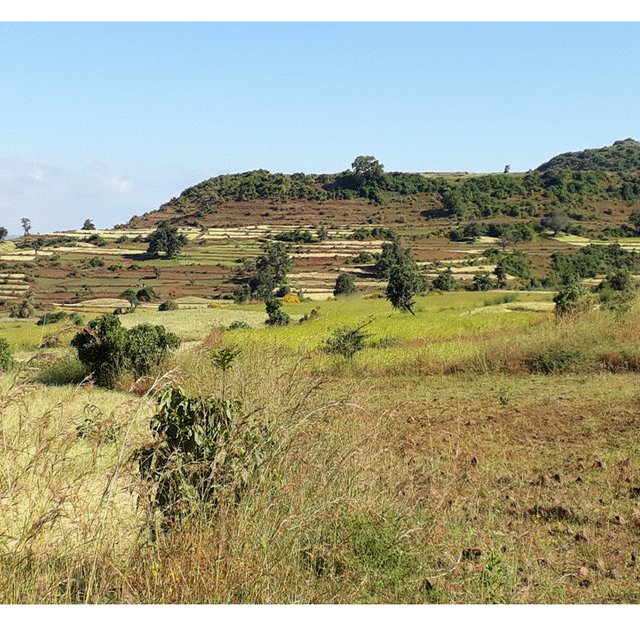
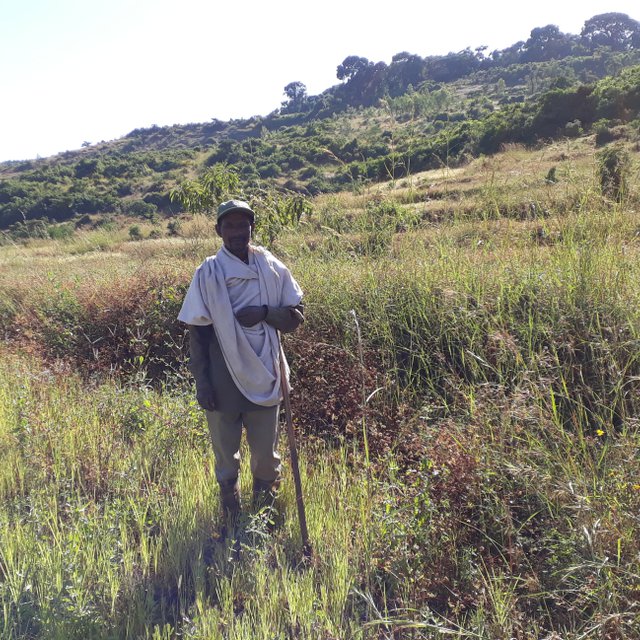


| ສາຍພັນ | ນັບ |
| ສັດໃຫ່ຍ - ງົວພັນນົມ | 2500 |
| ແບ້ | 830 |
| ແກະ | 2000 |
| ສັດປີກ | 10200 |
| ໂຕລໍ ແລະ ໂຕລາ | 1064 |









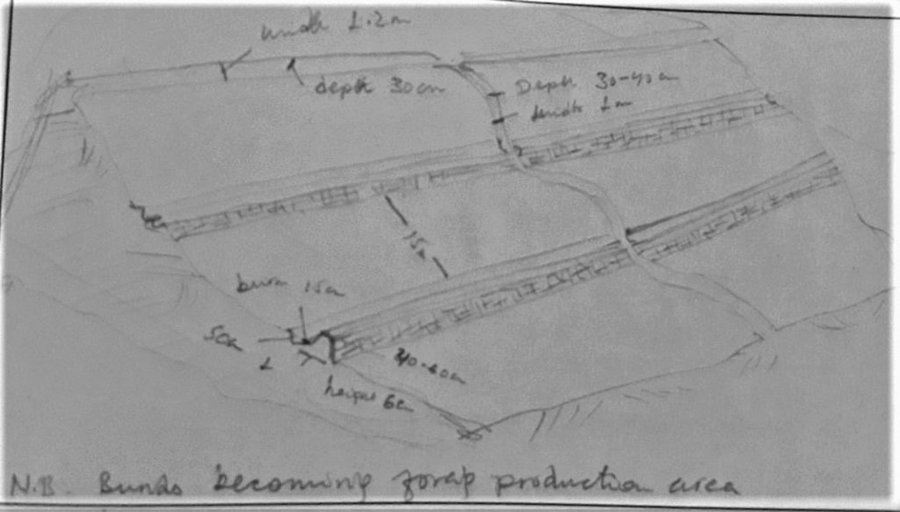
| ລະບຸ ປັດໃຈ ນໍາເຂົ້າ ໃນການຜະລີດ | ຫົວໜ່ວຍ | ປະລິມານ | ຕົ້ນທຶນ ຕໍ່ຫົວໜ່ວຍ (USA) | ຕົ້ນທຶນທັງໝົດ ຂອງປັດໃຈຂາເຂົ້າ ໃນການຜະລິດ (USA) | % ຂອງຕົ້ນທຶນທັງໝົດ ທີ່ຜູ້ນໍາໃຊ້ທີ່ດິນ ໃຊ້ຈ່າຍເອງ |
| ແຮງງານ | |||||
| cutoff-off drain | Person day | 2600.0 | 3.0 | 7800.0 | 1.0 |
| Waterway | Person day | 3500.0 | 3.0 | 10500.0 | 1.0 |
| Stone-faced soil bund | Person day | 14100.0 | 3.0 | 42300.0 | 1.0 |
| Bund stabilization | Person day | 1500.0 | 3.0 | 4500.0 | 1.0 |
| ອື່ນໆ | |||||
| Hand tools (shovel, pick-ax) | No | 1080.0 | 2.89 | 3121.2 | |
| Water level | No | 24.0 | 2.17 | 52.08 | |
| ຕົ້ນທຶນທັງໝົດ ໃນການຈັດຕັ້ງປະຕິບັດ ເຕັກໂນໂລຢີ | 68'273.28 | ||||
| ຄ່າໃຊ້ຈ່າຍທັງໝົດ ສຳລັບການສ້າງຕັ້ງເຕັກໂນໂລຢີ ເປັນສະກຸນເງີນໂດລາ | 68'273.28 | ||||
| ລະບຸ ປັດໃຈ ນໍາເຂົ້າ ໃນການຜະລີດ | ຫົວໜ່ວຍ | ປະລິມານ | ຕົ້ນທຶນ ຕໍ່ຫົວໜ່ວຍ (USA) | ຕົ້ນທຶນທັງໝົດ ຂອງປັດໃຈຂາເຂົ້າ ໃນການຜະລິດ (USA) | % ຂອງຕົ້ນທຶນທັງໝົດ ທີ່ຜູ້ນໍາໃຊ້ທີ່ດິນ ໃຊ້ຈ່າຍເອງ |
| ແຮງງານ | |||||
| Stone faced soil bund | person day | 10000.0 | 3.0 | 30000.0 | 1.0 |
| Bund stabilization | person day | 200.0 | 3.0 | 600.0 | 10.0 |
| ຕົ້ນທຶນທັງໝົດ ທີ່ໃຊ້ໃນການບໍາລຸງຮັກສາ ເຕັກໂນໂລຢີ | 30'600.0 | ||||
| ຄ່າໃຊ້ຈ່າຍທັງໝົດ ສຳລັບການບົວລະບັດຮກສາເຕັກໂນໂລຢີ ເປັນສະກຸນເງີນໂດລາ | 30'600.0 | ||||
It is because of integrated farmland conservation measures and improved use of agricultural input
Weed also grows together with forage grass and reduces the quality of grass.
This includes evapotranspiration
Crop residue management following livestock exclosure from the farmland.
Not alien species, but the common weed species getting spread.
But the bee colony is getting decreased due to the use of pesticide and insecticide.
Due to minimizing the number of livestock from time to time. It is due to the fact that farmers are unable to manage under better/ intensive management following controlled grazing.
Seasonal streams apparently have runoff longer into the dry season than before soil and water conservation, according to land users' observations.